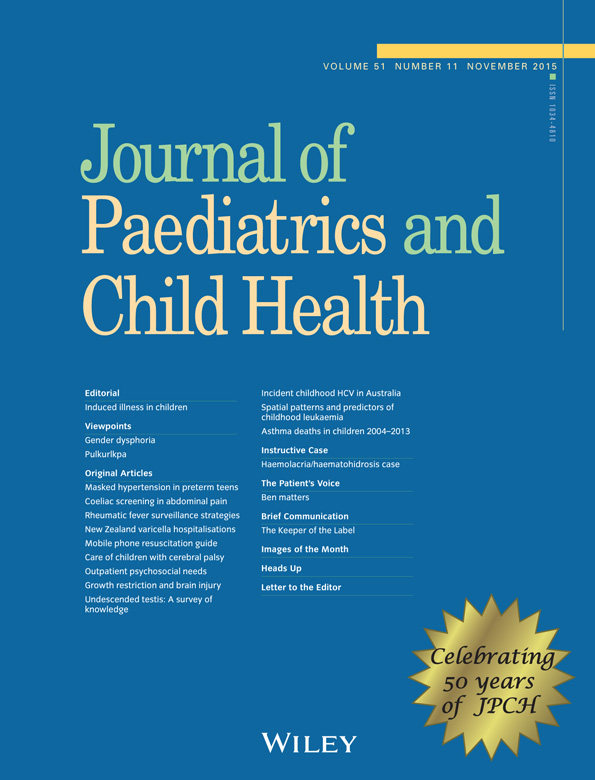Asthma deaths in children in New South Wales 2004–2013: Could we have done more?
Abstract
Aims
The aim of this study was to characterise the deaths of children from asthma in New South Wales (NSW) over the last 10 years and ascertain whether there were modifiable factors that could have prevented the deaths.
Methods
The hospital medical records, coronial reports, immunisation records and all relevant correspondence from general practitioners, medical specialists and hospitals were reviewed for children who died with asthma in the 10 years (2004–2013).
Results
In 10 years, there were 20 deaths (0–7 per year) with a male predominance (70%) occurring in children aged 4–17 years. Sixteen (80%) had persistent asthma and 4 (20%) had intermittent asthma. The majority (55%) had been hospitalised for asthma in the preceding 12 months, 25% in the preceding 6 weeks. The majority (55%) was aged 10–14 years. Ninety percent were atopic. Psychosocial issues were identified in the majority (55%) of families. Forty percent had a child protection history. Seventy-five percent had consulted a general practitioner in the year before their death, 45% had a current written asthma action plan and 50% had not seen a paediatrician ever in relation to their asthma. Of the 16 children at school, the schools were aware of the asthma in 14 (88%) cases, but only half had copies of written asthma plans.
Conclusions
Improved communication and oversight between health-care providers, education and community protection agencies could reduce mortality from asthma in children.




